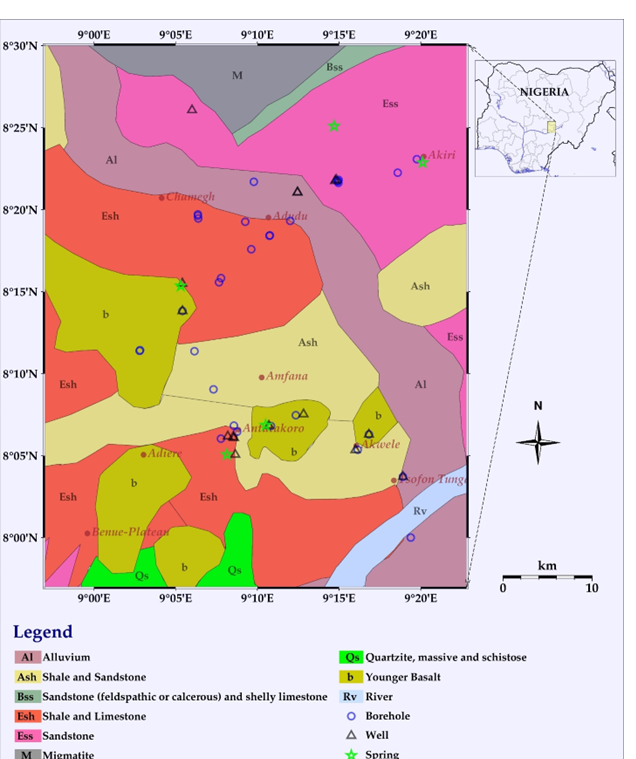Comparative analysis of lithium enrichment mechanisms in aquifers in the Benue Trough
Keywords:
Lithium concentrations, Ground water, Benue TroughAbstract
This study investigates the extractability of lithium for energy use from groundwater sources in the Awe part of the Middle Benue Trough. Field measurements of electrical conductivity (EC), total dissolved solids (TDS), temperature, and pH were conducted using a portable meter. Lithium concentrations in 53 groundwater sources, including 17 well samples, 31 borehole samples, and 5 springs were sampled and analysed using Inductively Coupled Plasma Mass Spectrometry (ICP-MS). Oxygen isotopes (?18O) were analysed using CO2 equilibration, and hydrogen isotopes (?2H) were analysed by thermochemical reduction to characterize the aquifers. The results indicate that three well water samples (A18, A19, and A38a) have lithium concentrations within seawater values (100-200 µg/L). Similarly, three borehole samples (A6, A15, and A38b) fall within this range, while three other borehole samples A17(794.6 µg/L), A35a(1,826 µg/L), and A37b(330.2 µg/L) exhibit significantly higher concentrations respectively. Among the spring water samples, three samples have lithium concentrations below seawater values, while the remaining two samples A13(1,810 µg/L) and A35b(1,968 µg/L) show elevated levels. Isotopic analysis of ?2H and ?18O identified three distinct types of aquifers in the study area. Water from the deeper aquifer contains high concentrations of lithium, TDS, EC, and elevated temperatures. The lithium concentrations in the deeper saline aquifers A13(1810 µg/L) and A35b(1968 µg/L)suggest significant potential for extraction and use as an energy source.

Published
How to Cite
Issue
Section
Copyright (c) 2025 Rhoda Bernard Gusikit, Solomon Nehemiah Yusuf, Hyeladi Usman Dibal, Victor Bulus Diyelmak, Ahmed Isah Haruna

This work is licensed under a Creative Commons Attribution 4.0 International License.
How to Cite
Most read articles by the same author(s)
- Solomon Nehemiah Yusuf, Williams Midala Wakili, Geological mapping and structural analysis from satellite imagery of a section of the Adamawa Massif: Implications for mineralization , Journal of the Nigerian Society of Physical Sciences: Volume 7, Issue 3, August 2025







